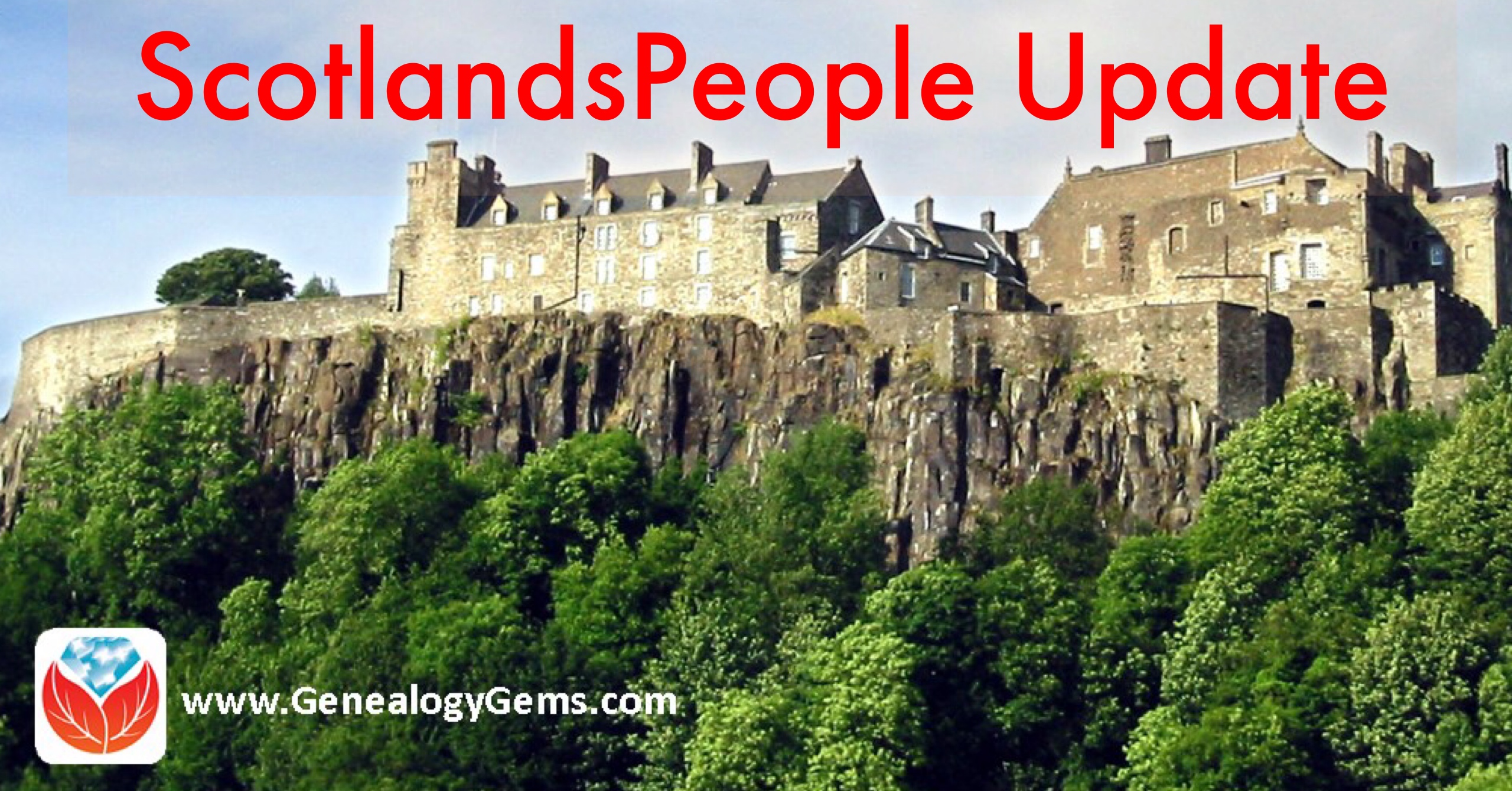12 Strategies for Finding Maiden Names of Female Ancestors
Show Notes: Finding female ancestors poses unique challenges that can throw roadblocks in your way. And the reason for that is simple. The women in our family tree assume the surname of their husbands when they marry. In genealogy, we’re researching backward through time, and that means we encounter a woman’s married surname first. However, it’s critical that we eventually locate the records that mention the woman’s maiden name so that we can find her parents and continue to climb her family tree. Professional genealogist Shelley Bishop has come to the rescue in her new Family Tree Magazine article. It’s called Ladies in Waiting. In that article, she covers 12 resources for discovering maiden names.
Watch the Video
Show Notes
Downloadable ad-free Show Notes handout for Premium Members.
Lisa: Hi, Shelly.
Shelley: Hi, Lisa, thank you for having me.
Lisa: This is a great article. I think it’s going to help many people bust through the maiden name roadblock. And it really is a kind of roadblock, isn’t it?
Shelley: It really can be a real challenge. Whether you’ve done a little bit of genealogy or a lot of research, it can definitely be a stumbling block for you.
12 Places to Look for Maiden Names
Lisa: Well, I love that you’ve got 12 places for us to look for maiden names. Take us to the first location. What’s your first resource for finding maiden names?
Strategy #1: Marriage Records
Shelley: The first thing you’re going to probably want to do is see if you can find a marriage record. I think that’s probably the natural place to begin. Marriage records don’t exist for all times and all places. So, as you go back further in time, you may find that there aren’t really marriage records. But if there are, that is going to definitely be the first place you want to look.
Most marriage records could have been created at the local level. More recent ones can often be found at the state level. And they will usually say the woman’s maiden name. And there can be other clues if it doesn’t state it.
Strategy #2: Family Records
Lisa: That’s a great point. And closely related to that is family records, right? These are records collected over the years. You might even find them in your own drawers and around your house.
Shelley: Absolutely. Family sources can be amazing. You might find mention of a woman in a diary or letters. Letters might expose relationships and names that you weren’t aware of, or places that you weren’t aware of.
It’s also important to talk to some family members who might know a little more or who might have some of these family materials and keepsakes that you could look at. Ask them if they’d be willing to talk with you and maybe you can copy some of their things. That’s a great way to get started.
Strategy #3: Church Records
Lisa: So, you’ve got the family sources, and the civil marriage records. What about religious records? I think you had that as number three.
Shelley: I did, yes. When there isn’t a record of a civil record of a marriage, there could still be a religious record of a marriage. Check church records. See what church records existed for that time and place and determine where they might be held. That can change over time. There’s a lot of different places.
You might look at the baptism records of children, because those will often state the mother’s maiden name. Again, these are church records. So, there’s a variety of church records that can help you.
Lisa: And church records often go a lot farther back than the civil records, don’t they?
Shelley: Definitely, if you’re lucky, they can go quite far back.
In the Pioneer days, sometimes a traveling preacher would keep his or her own records, and some of those little journals have been discovered and published. So, you can even find those!
Strategy #4: Children’s Vital Records
Now you have your children’s vital records as number four. What are we looking for there?
Shelley: Yes, children’s vital records can be great. We’re looking for birth records of children to see if they exist. The marriage records of children sometimes will state the mother’s maiden name, which is a real find. And the death records of a child may also state the maiden name. Those things are really worth checking out.
Be sure to look for records of all of the woman’s children, not just the one that you’re descended from. You want to look at all of the children that she had, even if they are by a different husband, because you just never know what you might find there. And if she had a child who died young, which is a sad situation, that record may give the mother’s maiden name.
You mentioned looking at all the different children. I know for me and some of my families, I find that different children, whether they were born earlier or later in the woman’s life, sometimes that surname kind of looks a little different on some of those. The reason to look at all of them is the possible variations in the spelling of the surname. Sometimes the children weren’t exactly sure how this surname was pronounced or spelled. They just knew it was sort of like something so you will get variations. When you find those, just compare them between the different records and be generous in your search and try different variations when you’re conducting searches.
Lisa: Yeah, I know, even with my grandmother, she would say Mickolowski with an M, but it was actually Nikolowski with an N. So, checking everyone else’s records really helps find which is the most regularly used spelling.
Strategy #5: Death Records
Shelley: The fifth resource would be death records. And that would be both the death record of the woman herself, of course, but also, death records of the children, and death records of her husband or husbands. They could provide her maiden name.
And you might find someone else who is associated with her. I can’t overstate the importance of doing whole family research, because women relied on other people in their lives. They relied on men, especially. So that could be her brothers-in-law, her husband(s), her father while he was alive, and so forth. Those death records are something you’re going to want to explore for everybody that you think she might have been associated with, or that might have been related to her.
Lisa: That’s a great point. What you’re describing is cluster research.
When we get to the point of finding her death record, that’s a much later record. She’s not standing right there making sure the name gets written down correctly. So, if we can find earlier death records of associated people, they might be more accurate.
Shelley: Yes, that’s true. Unfortunately, a lot of times, especially if a woman lived to enjoy ripe old age, they didn’t even know her maiden name! You’ll find unknown written on the line where it should be.
Lisa: Exactly, and that’s why this article is great. You’re going to help us get past the unknown.
Strategy #6: Cemetery Sources
I see that number six is cemetery sources.
Shelley: Yes. Gravestones don’t give you a whole lot of information, just usually dates. But I find that you can even find cemetery records about who purchased the family plots, where she’s buried and who she is she buried with. You can get great clues from seeing who is buried with a woman. It might be her parents or others with her maiden name. And sometimes, that’s not apparent when you’re just looking at a single gravestone record online.
So, if you can, I always recommend trying to go to the cemetery in person. See how those graves are positioned and see who she’s buried with.
You might also find a published transcription that’s been done by a society where the graves have not been put in alphabetical order. They’ve just been put in the order in which they were encountered when they were read. That can also be another source of clues. So, you can sometimes find a young child who’s buried with his or her maternal grandparents. I had a big breakthrough that way, and that was the source of the maiden name. I knew this couple had a child. Unfortunately, she died young. She was buried with her mother’s parents.
Lisa: Gosh, it’s amazing how many different ways you can stumble into things like that.
Strategy #7: Census Records
For number seven you have census records.
Shelley: Census records can help in a lot of ways. Especially if the woman is widowed. Later in life, she might be living with an adult son or adult daughter in the home of a son-in-law. That is a great way to find somebody. If you find a woman living in old age in with a man whose name you don’t recognize, and then some another person that could be a daughter, that’s really worth investigating.
Likewise, if the woman herself died young, her children may have been taken in by her parents or her sister or someone like that. You may find if she died at age 36, you may find her children living with her parents in another census record.
Lisa: I’ve even seen by looking through the census records – and you were talking about the cluster research of looking at all the different family members – seeing a name of a child, either in her family or her sister’s family. And that name really sounds like a surname. That could be a mother’s maiden name being used as the child’s first name.
Shelley: Yes, that does happen. Maiden names were used as first names. That was a pretty popular practice in some areas. It can be a clue to the mother’s maiden name. It can also be a clue, believe it or not, to the grandmother’s maiden name. Sometimes they would take it back a generation farther. I had someone named Greenman as a first name. Well, that’s a surname, right? So, I had to get work back to find the Greenmen. And it ended up being, two generations back, a surname.
Strategy #8: Newspapers
Lisa: One of my favorite record sources is newspapers, and you have that as #8 in good places to find maiden names.
Shelley: Oh, my gosh, that is a fantastic place! Again, depending on the time period and the locality that you work in, you’ll want to look for marriages and announcements, which can vary anywhere from just a short little social note to long, elaborate marriage announcements. Those will almost always say the full name of the bride.
You can also look for Golden Anniversary announcements. If they’ve been married a long time and had a 50th anniversary, a lot of times, they’ll give a whole rundown of when and where they married and their parents. Sometimes they’ll even name their parents. And they’ll talk about people who attended the anniversary party, which could be her siblings with the maiden name.
And the other things are social notices. If they went out of town to visit relatives with the maiden name or something like that, you might find that.
And of course, there are obituaries. It may include not only of the woman and her husband, but also their children. Anyone mentioned that you think might have been related is worth looking into.
And I know you’ve done a lot of work on newspapers. Your book is a great guide to using newspapers.
Lisa: I just love them. And like you said, there’s so many different types of articles that can have that information. What’s number nine?
Strategy #9: Published Sources
Shelley: Number nine is published sources. Those would include things like old county and town histories where they might talk about the early settlers of a region, and the first members of the early churches. A lot of times you’ll find women’s names in there. You’ll also sometimes find a biographical sketch could be of her husband, her son or her grandson, and that could be in a far distant city and state than where she lived.
Published family histories are another place to look. A lot of times they will give the maiden names of women who married into the family.
You also have online family trees, which have to be taken with a little grain of salt because they’re not always as well documented as we’d like them to be. We have to be kind of careful about just accepting what they say. But that’s true for all published resources. We also have to verify that information. You will definitely want to do additional research to either confirm or refute the information.
Lisa: Very good point. Number 10 is court records.
Strategy #10: Court Records
Shelley: A woman’s status when she was married historically, she was a feme covert. She was literally covered by her husband’s care. And she could not make any court decisions or any financial arrangements, or anything like that, in her own name. Her husband was in charge of all of that for her.
When she was widowed, then she could take care of her own affairs. So, you might want to look at estate records of her possible father, and those will usually name both her husband and her in these estate records. Did they receive property? Were they named in a will? And so forth, like that. You will often see a woman named with her husband in estate records.
Guardianship records could have been created if the woman died while her children were still young. Guardianship was done to protect the property of the children against other people who might come later and try to claim that property, including a woman’s future husbands.
Divorce records may be found if the woman got divorced. You will often find her maiden name there because they will go back to the original marriage.
Strategy #11: Deeds
Lisa: Number 11 is Deeds. We can find maiden names in deeds?
Shelley: You can occasionally find maiden names and deeds. And sometimes if you can’t find the maiden name, at least you can find good clues there.
Again, if her she had a father or widowed mother who died and left property, sometimes there’s not a will. And sometimes there’s not a probate or an estate file. In that case, you want to check the deeds, because if they own property, it might have just passed down to the children without going through the courts. And if that’s the case, then the children had to decide how to divide up the property or they had to liquidate it. And so often, some of them would sell their shares to another one. Or they might also sell their shares to a third party. So, you want to look in the deeds, and these are called Quitclaim deeds, because the person is quitting, basically giving up their claim to their fair share of the property. So, if you find a deed that has that word, Quitclaim in it, that’s a good indication that that there are other people who are invested in that property, who also have interest in it. You might be able then to find those people and find out how they’re related. And then, who owned the property that they are now dealing with.
Lisa: Terrific strategies! There are so many different creative ways to deal with this problem of trying to find maiden names.
Strategy #12: Military Pension Records
And the last one is one I would imagine a lot of people haven’t thought of, but I agree with you. I think it’s a great resource. Number 12 is military pension records.
Shelley: So, if your mystery woman was married to someone who served in the Revolutionary War, war of 1812, or the Civil War, you want to check to see if either the soldier or his widow applied for a pension after the fact. Those pension records can be a goldmine! You can learn so much from them. They’re really interesting to read!
There are indexes to those, and I talk about where to find those in the article. And you can look for them. You can order the entire file from the National Archives, or sometimes those files now have been digitized. Look through them and see what you can find. In some cases, they will lay out exactly the woman’s maiden name, when she was married, the names of her children and their ages.
Lisa: Well, we have really learned a lot from you. Shelley, I think you’ve kind of smashed the idea that we just have to be stuck by not knowing a woman’s maiden name. There are so many other places to go and look. And with a little bit of diligent effort, I think we have a really good chance of success.
About Genealogist Shelley Bishop
We’ve been talking about Shelley’s 12 strategies for finding maiden names. She goes into all of this in detail in her article called Ladies in Waiting in the March / April 2023 issue of Family Tree Magazine. And you can find Shelly Bishop at Buckeye family trees.com. It’s been so fun to catch up with you and talk about this topic. Thank you, Shelly!
Shelley: Thank you, Lisa. I really appreciate you having me. And I just want to tell everybody, keep at it keep, keep searching. Best of luck with finding those maiden names!
Resources
Downloadable ad-free Show Notes handout for Premium Members.



 Recently,
Recently, 
